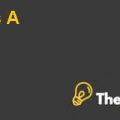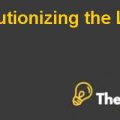
Run the appropriate two way ANOVA analysis and interpret your results. Be sure to evaluate how well the data meet the required assumptions.
First of all before interpreting the output results, if we look at the assumptions then there are 6 assumptions before the Two-Way ANOVA test could be performed. First the dependent variable should be measured at a continuous level which is true for salary in this case. Second, the independent variables should consist of two or more than two categorical groups which is true for gender and cultural identity. Third, there is also no relationship among the observations. Fourth, there are not any significant outliers in the data. Fifth, the dependent variable is normally distributed for each of the groups of the dependent variable and lastly there is also homogeneity of variances for the different group combinations for the two independent variables. All 6 assumptions are met therefore; the data can now be interpreted.
First of all we can see in the output that, the plot of salary forms a line graph for the different group combinations of gender and cultural identity. However, if we look at the Tests of between subjects effect table in the output then it could be seen that the significant value for the gender*cultural identity interaction is statistically insignificant at p value of 96.8%. Also, cultural identity has insignificant impact on salary (p-value=37%), whereas gender as a statistically significant impact on salary with p value of 0%.
QUESTION 2
Do you reject or not reject the null hypotheses?
Ho: There is no interaction between gender and cultural identity.
This is the null hypothesis and since the significant value is more than 5% therefore, the null hypothesis will be not rejected.
QUESTION 3
Is there evidence of an interaction between gender and cultural identity? If there is, what does it mean?
The evidence for the interaction between gender and cultural identity is usually shown by profile plots which form a line graph; however, since the lines are parallel, they show no interaction between gender and cultural identity.
Output
|
Between-Subjects Factors |
||
|
N |
||
| Gender | F |
63 |
| M |
37 |
|
| CulturalIdentity | AA |
40 |
| E |
31 |
|
| H |
29 |
|
|
Descriptive Statistics |
||||
| Dependent Variable: Salary | ||||
| Gender | Cultural | |||
Identity
Mean
Std. Deviation
N
FAA
43508.20
11321.191
25
E
43180.06
12684.642
17
H
46999.43
10373.771
21
Total
44583.40
11350.523
63
MAA
80883.53
10845.726
15
E
81904.07
10830.660
14
H
85255.50
9660.965
8
Total
82214.97
10444.297
37
TotalAA
57523.95
21375.138
40
E
60668.32
22812.286
31
H
57552.83
20074.865
29
Total
58507.08
21302.262
100
|
Tests of Between-Subjects Effects |
|||||
| Dependent Variable: Salary | |||||
| Source |
Type III Sum of Squares |
df |
Mean Square |
F |
Sig. |
| Corrected Model |
33296983376.614a |
5 |
6659396675.323 |
53.835 |
.000 |
| Intercept |
355811825669.518 |
1 |
355811825669.518 |
2876.393 |
.000 |
| Gender |
31931511567.848 |
1 |
31931511567.848 |
258.135 |
.000 |
| CulturalIdentity |
248603714.877 |
2 |
124301857.438 |
1.005 |
.370 |
| Gender * CulturalIdentity |
8000988.409 |
2 |
4000494.204 |
.032 |
.968 |
| Error |
11627867194.746 |
94 |
123700714.838 |
||
| Total |
387232691584.000 |
100 |
|||
| Corrected Total |
44924850571.360 |
99 |
|||
| a. R Squared = .741 (Adjusted R Squared = .727) | |||||
|
Multiple Comparisons |
||||||
| Dependent Variable: Salary |
Tukey HSD(I) Cultural Identity(J) Cultural Identity
Mean Difference (I-J)
Std. Error
Sig.
95% Confidence Interval
Lower Bound
Upper Bound
AAE
-3144.37
2661.365
.467
-9482.15
3193.41
H
-28.88
2712.574
1.000
-6488.61
6430.85
EAA
3144.37
2661.365
.467
-3193.41
9482.15
H
3115.49
2873.306
.526
-3727.00
9957.99
HAA
28.88
2712.574
1.000
-6430.85
6488.61
E
-3115.49
2873.306
.526
-9957.99
3727.00
Based on observed means. The error term is Mean Square(Error) = 123700714.838.
|
Salary |
||
| Tukey HSD | ||
| Cultural | ||
Identity
N
Subset
1
AA
40
57523.95
H
29
57552.83
E
31
60668.32
Sig.
.490
Means for groups in homogeneous subsets are displayed. Based on observed means. The error term is Mean Square(Error) = 123700714.838.a. Uses Harmonic Mean Sample Size = 32.701.b. The group sizes are unequal. The harmonic mean of the group sizes is used. Type I error levels are not guaranteed.
.........................Week 4 Stat Work Case Solution
This is just a sample partial case solution. Please place the order on the website to order your own originally done case solution.












